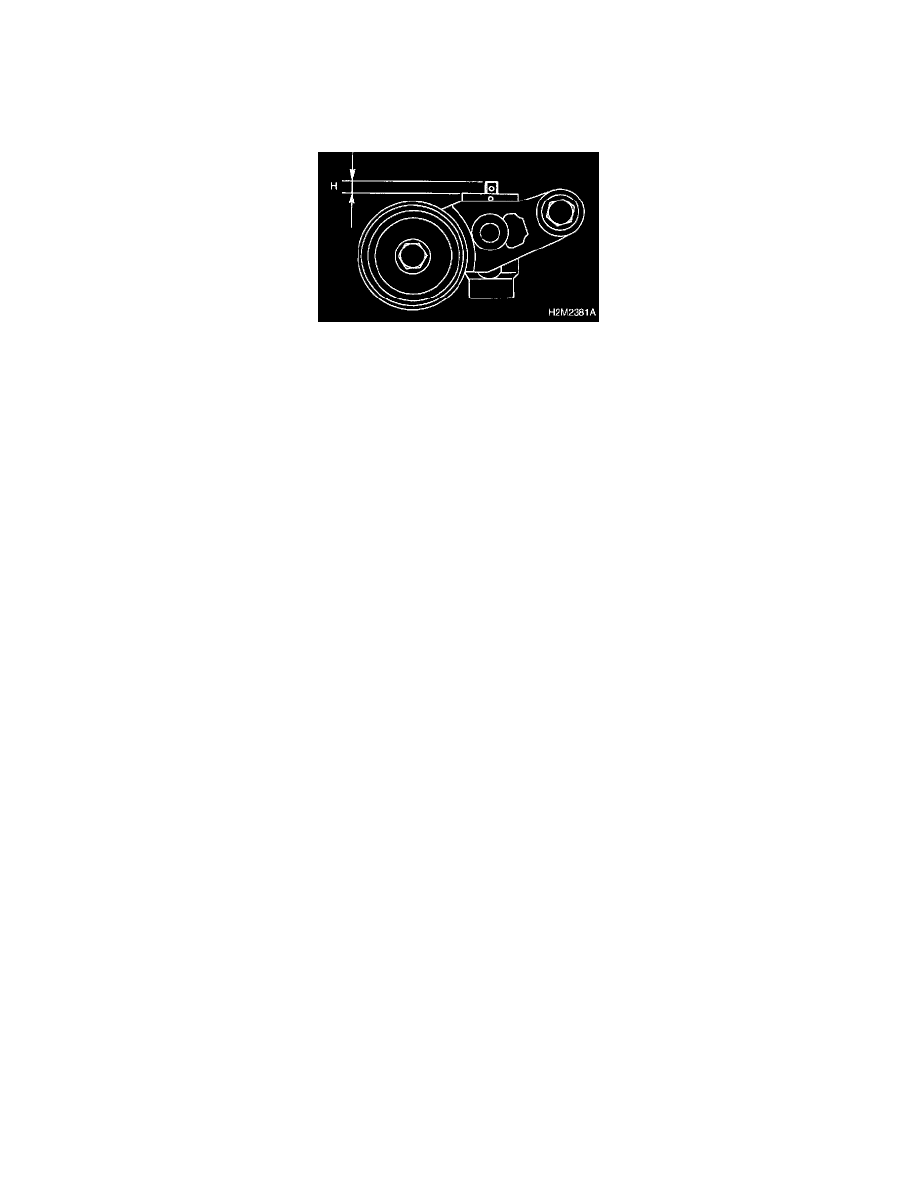Legacy GT LTD Sedan AWD F4-2.5L DOHC (1998)

assembly.
CAUTION: Slight traces of oil at rod's oil seal does not indicate a problem.
2) Check that the adjuster rod does not move when a pressure of 294 N (30 kg, 66 lb) is applied to it. This is to check adjuster rod stiffness.
3) If the adjuster rod is not stiff and moves freely when applying 294 N (30 kg, 66 lb), check it using the following procedures:
(a) Slowly press the adjuster rod down to the end surface of the cylinder. Repeat this motion 2 or 3 times.
(b) With the adjuster rod moved all the way up, apply a pressure of 294 N (30 kg, 66 lb) to it. Check adjuster rod stiffness.
(c) If the adjuster rod is not stiff and moves down, replace the automatic belt tension adjuster assembly with a new one.
CAUTION: Always use a vertical type pressing tool to move the adjuster rod down. Do not use a lateral type vise. Push
adjuster rod vertically. Press-in the push adjuster rod gradually taking more than three minutes. Do not allow press pressure to
exceed 9,807 N (1,000 kg, 2,205 lb). Press the adjuster rod as far as the end surface of the cylinder.
WARNING: DO NOT PRESS THE ADJUSTER ROD INTO THE CYLINDER. DOING SO MAY DAMAGE THE
CYLINDER.
4) Measure the extension of rod beyond the body. If it is not within specifications, replace with a new one.+.....
Rod extension: H 5.7f 0.5 mm (0.224f 0.020 in)
3. BELT TENSION PULLEY
1) Check mating surfaces of timing belt and contact point of adjuster rod for abnormal wear or scratches. Replace belt tension pulley if faulty.
2) Check belt tension pulley for smooth rotation. Replace if noise or excessive play is noted.
3) Check belt tension pulley for grease leakage.
4. BELT IDLER
1) Check idler for smooth rotation. Replace it noise or excessive play is noted.
2) Check outer contacting surfaces of idler pulley for abnormal wear and scratches.
3) Check idler for grease leakage.
5. SPROCKET
1) Check sprocket teeth for abnormal wear and scratches.
2) Make sure there is no free play between sprocket and key.
3) Check crankshaft sprocket notch for sensor for damage and contamination of foreign matter.
